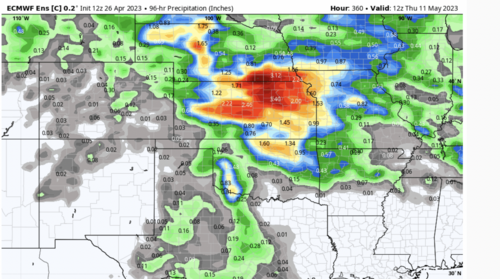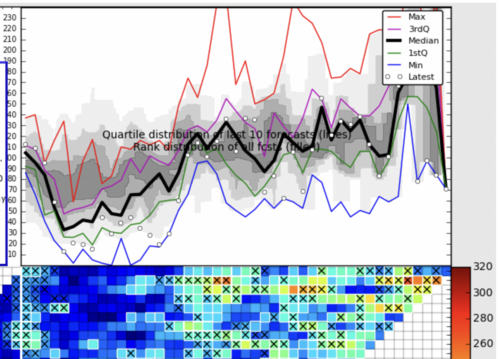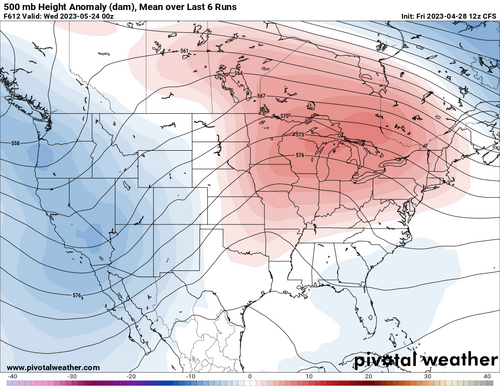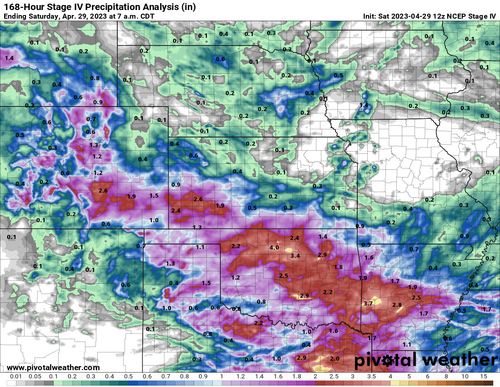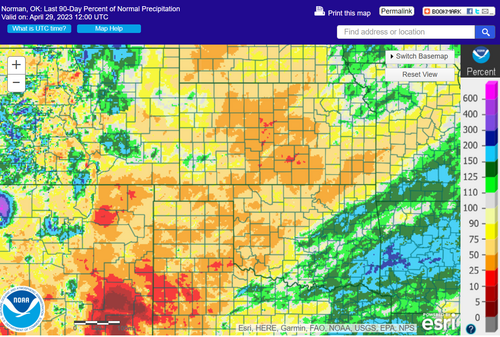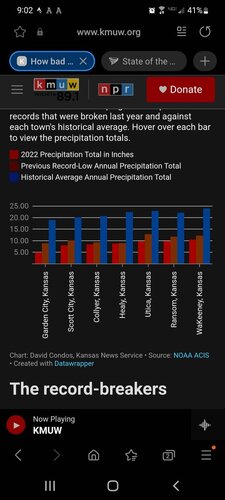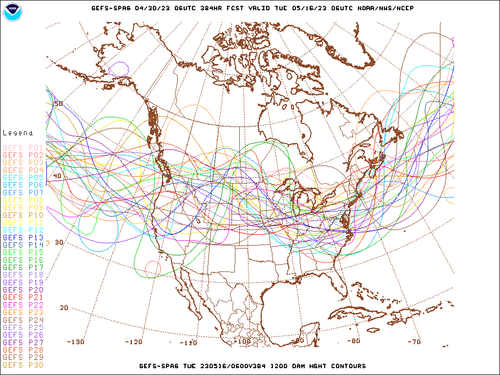End of April Update on my MAM forecast:
April, the verdict is an unequivocal
BUST. The large-scale pattern beginning late the first week of the month shut down the vast majority of chase chances as troughing persisted over the eastern CONUS. Monthly tornado counts will be well-below average taking the top off the near record run to finish out March. Upper-level flow over chase alley was northwesterly with very little to show for it. A few chase opportunities did show up this week as the MJO forcing did allow some jet energy/troughing to sneak into the west side of the Block. But by and large, much of this April will be relegated to the trash heap. The benefit was lots of rain. The upper low turned into a serious "drought denter" dropping nearly 4 inches of rain at my house in Norman in just 10 days. Much of the high Plains also got in on the action as well with widespread 1-3 inches of precip reported in the last week or so. With some additional light rain tonight, D4 should be reduced some heading into May.
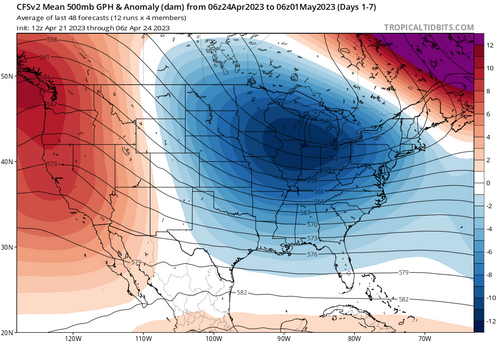
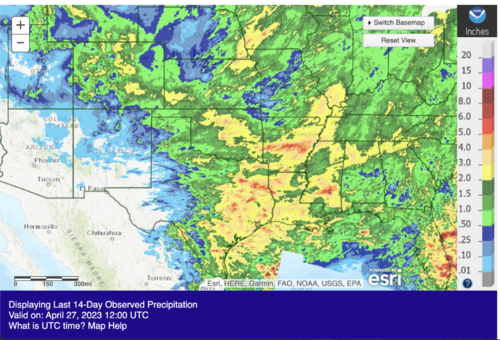
Now looking into the future, there's bad news and some potential good news. I'll start with the bad news:
BAD
Expect much of the same from April for the first week of May. Overall conditions look quiet for chasing through the first week of May. A large Omega Block is set to form in the next 2-3 days centered near the Rockies and Great Basin. The eastern node of the block is expected to focus a large upper low over the eastern 2/3rds of the CONUS. A second low should also develop over the West Coast. This is a strong block and will likely remain in place through the next 5-7 days after it develops. However, there will likely be a few mesoscale days as subtropical energy slides beneath the Block in this time frame, but the overall pattern is not great.
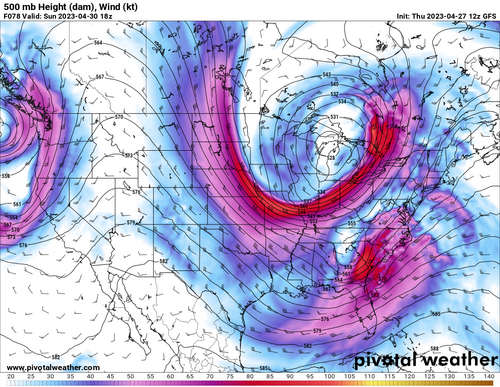
Now for some potential good. While Blocks like this are the last thing you want to see for May, there's still some hope. The overall forecast is not set in stone with several solutions pushing the block farther east or weakening it rather quickly. Models are notoriously poor at handling these types of situations and it's no surprise to see such variance in the solutions especially still several days out. My personal take is that we will see blocking develop, it will suck for a bit of the first week of May, but then something interesting happens...
Starting near the end of the first week of May, MJO forcing begins to increase quickly. The large-scale block is already being to break down as subtropical- jet energy picks up in the western node across the Southwest. There's relatively good agreement that the block lifts to the north as split mid-level flow and stronger westerlies begin to reemerge over the Rockies and Plains. This is well-timed with the increase in the MJO forcing as large-scale Pacific jet energy also begins to increase as we head into the second week of May.
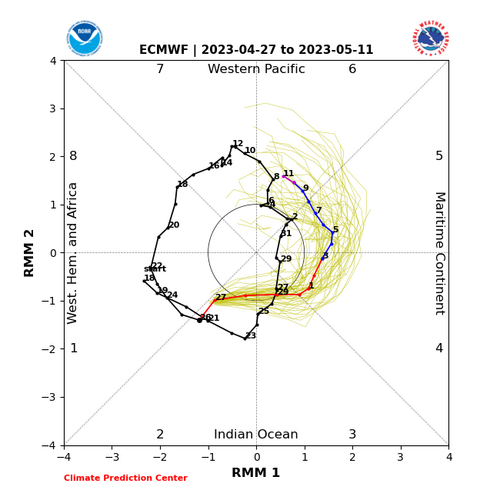
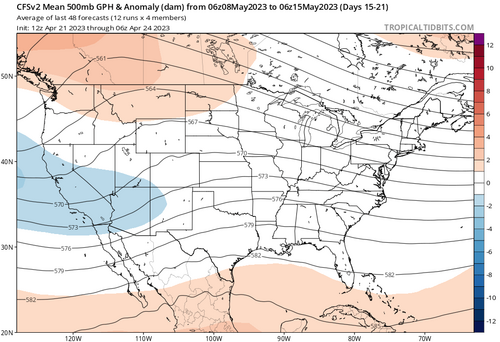
There's now considerable agreement on the weekly climate models and GEFS/EPS/CFS on western US troughing developing in the second week of May. Coincident with the MJO cycle, forecast velocity potential (large-scale rising and sinking air in the tropics) hints that a new ridge could start developing over the western Atlantic and Gulf. These solutions point to the amplification of the pattern and a potentially active stretch beginning roughly in the second week of May. The general trend sticks around through Week 3 before the aforementioned ridge starts to really ramp up toward the 4th week and into early June. I would expect that ridge to rapidly build into its climo position over the southern Plains and Mexican High Plateau by the last few days of May and the first week of June. But, zonal flow and some enhanced westerlies still look present over the central and northern Plains and there is a strong signal for above average Precip and PWAT anomalies on the Front Range and High Plains.
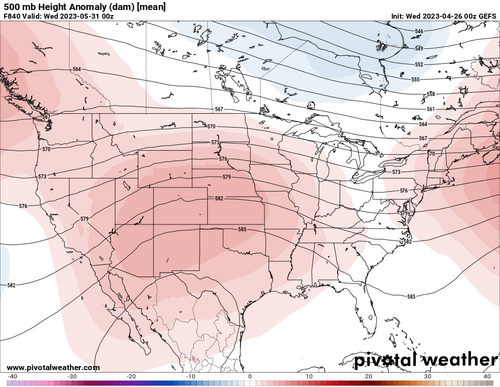
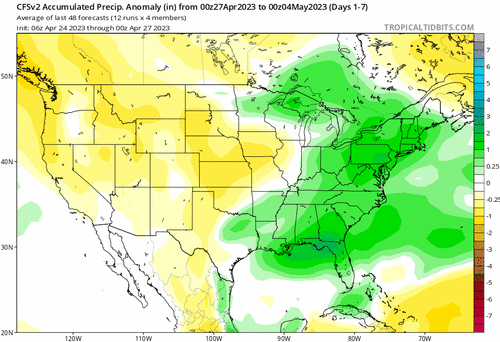
All this to say, I'm still cautiously optimistic that May will yield a good stretch beginning sometime late week 1 through much of the middle and end of the Month. The presence of increasing large-scale jet energy and MJO forcing in the next few days is a good sign to me that the pattern is going to get active despite the crappy start.
Takeaways:
- April is a dud. Heh, I messed that forecast up

- The first week of May will have a mesoscale-driven shot or two but, things look to be generally quiet.
- There's good agreement that things could heat up the second week to mid-May as the MJO and westerlies are forecast to tick up.
- The climo ridge should quickly build in late May. I expect a short Southern Plains season before things shut down and move north but it looks like there is a signal for MCS activity to linger, so drought concerns might be tempered.
- The central Plains and Front Range are in the running for a decent Late May and early June if the pattern holds.
I could also be entirely wrong and things could suck, enjoy the uncertainty!
-Lyons
